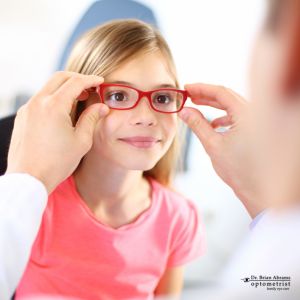In a 2018 study, researchers found that myopia affected up to 6% of children between the ages of 6 and 8 years old and increased up to 30% of children 11 to 13 years old. The rate at which children are experiencing myopia is increasing and can lead to more serious conditions that concern sight if there is no treatment or control. To find out how your child is affected by myopia or nearsightedness and the best course of action to control its profession, book a children’s eye exam with Dr. Brian Abrams, a trusted family eye doctor in Vaughan.
What is Myopia?

Myopia is nearsightedness. This is when objects close up appear clear, but objects in the distance are blurry and difficult to see. Myopia or nearsightedness is the most common optical challenge worldwide, affecting billions of people. With the proper care, you can control myopia and mitigate its risks, including cataracts, vision loss, retinal detachment, headaches, and more.
Signs of Myopia in Children
Because children are not able to advocate for themselves or communicate as clearly as adults, it’s important to recognize the signs of eye trouble so you can determine when to take your child to the eye doctor.
- Some of the signs of nearsightedness in children include:
- Blinking or squinting frequently
- Holding objects extremely close to the face
- Having trouble reading the board at school
- Eye rubbing
- Difficulty playing sports
To get ahead of changes in your child’s vision, doctors recommend scheduling annually when in school once they start school as the eyes develop and stabilize.
Here are our tips to prevent and control myopia for you and your children.
Play Outside
Spending time outside and playing in natural light helps give your child’s eyes a break from screens and books that require long periods of focus. Playing outside for approximately 60 to 90 minutes gives your child a chance to relax their eyes and look at things farther in the distance, slowing the progression of myopia.
Reduce Screen Time
Screen time is reported to be the most significant risk for myopia outside of genetics. However, screens are hard to avoid in today’s digital age. Taking steps to manage and limit screen time can help minimize digital eye strain and nearsightedness, especially in children. Talk to your eye doctor in Vaughan about the best routine for you and your child to ensure you pave a path forward.
Prescription Glasses
If you visit an eye doctor in Vaughan like Dr. Brian Abrams and they recommend your child wear prescription glasses, it’s important that they do. Prescription lenses allow your child to avoid squinting or straining when they need to focus. Wearing them when in school, watching TV, and looking out the distance can make for a more comfortable life. To find out if prescription glasses are right for your child, book a children’s eye exam with Dr. Brian Abrams.
Book a Children’s Eye Exam with Dr. Brian Abrams
Changes in your children’s vision can be challenging to manage on your own. Your trusted eye doctor in Vaughan, Dr. Brian Abrams, is here to provide you with tailored care options and treatment, starting with children’s eye exams. We’re here for the whole family. Book your next visit.


